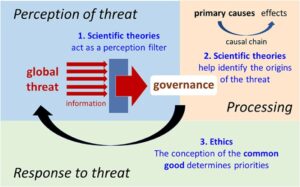![[Card] Balancing Forces : r/collectivecg](https://biovac.info/wp-content/uploads/2025/07/p8aoiyni6ex21.jpg)
Card balancing tips are essential for anyone looking to create or enjoy fair and engaging gameplay in card games. Balancing cards ensures that no single card overwhelms the game, maintaining excitement and strategic depth. By understanding the nuances of card mechanics and player interactions, designers and gamers alike can foster a more enjoyable and competitive atmosphere.
In this exploration of card balancing, we will delve into various techniques for achieving balance, common mistakes to avoid, and the importance of playtesting and ongoing adjustments. Whether you’re a game designer or a player, these tips will help you appreciate the delicate art of card balancing.
Understanding Card Balancing
![[Card] Balancing Forces : r/collectivecg [Card] Balancing Forces : r/collectivecg](https://biovac.info/wp-content/uploads/2025/07/p8aoiyni6ex21.jpg)
Card balancing is a vital aspect of game design, particularly in card-based games where each player’s deck can significantly influence gameplay dynamics. It involves adjusting the strengths and weaknesses of various cards to ensure a fair and enjoyable experience for all players.Balancing cards is crucial because it directly impacts the gameplay experience. A well-balanced game keeps players engaged, encourages strategic thinking, and prevents any one card from dominating the game.
Several factors influence card balance, including card rarity, cost, synergy with other cards, and the overall game mechanics.
Factors Influencing Card Balance
The balance of cards in a game can be affected by various elements:
- Card Synergy: How cards work together can amplify or diminish their effectiveness.
- Player Strategy: Different strategies can highlight the strengths or weaknesses of certain cards.
- Meta Trends: The evolving landscape of player tactics can shift the balance of power among cards.
- Game Mechanics: The core rules of the game can either enhance or limit the impact of specific cards.
Techniques for Effective Card Balancing
Achieving effective card balancing requires a structured approach. Game designers often employ several techniques to ensure a fair playing field.Statistics play a pivotal role in informing card adjustments. By analyzing win rates, usage rates, and player feedback, developers can identify which cards may need tweaking. It’s essential to create a balance between different card types and ensure that no single card becomes too powerful.
Methods for Balancing Cards
Incorporating various methods can enhance card balance:
- Statistical Analysis: Use data to track card performance across matches.
- Playtesting: Regular testing with diverse player groups can reveal imbalance issues.
- Iterative Adjustments: Make incremental changes rather than sweeping overhauls to maintain stability.
- Community Feedback: Engaging with players can provide insights into perceived balance issues.
Common Mistakes in Card Balancing
Despite the best intentions, designers often encounter pitfalls in the balancing process. Recognizing these common mistakes can help avoid major issues in gameplay.Overpowered cards can severely impact game integrity, leading to frustration among players and diminishing the overall experience. When one card dominates the meta, it can result in a lack of diversity in gameplay strategies.
Frequent Pitfalls Encountered
Understanding common mistakes can help improve balance efforts:
- Ignoring Player Feedback: Disregarding community input can lead to persistent imbalance issues.
- Over-Correction: Making drastic changes after an imbalance can create new issues.
- Neglecting Meta Shifts: Failing to adapt to changing player strategies can result in outdated balance.
- Inconsistent Updates: Infrequent adjustments may leave the game feeling stale and unresponsive.
Card Balancing in Different Game Genres
Card balancing techniques can vary significantly across different game genres. Understanding these differences is crucial for effective game design.In competitive play, the stakes are higher, and players often seek to exploit any imbalance for victory. Conversely, casual play may allow for a more lenient approach, focusing instead on fun and creativity.
Comparative Techniques Across Game Types
The approach to card balancing can differ based on the genre:
- Competitive Games: Focus on precision and strict balance to ensure fairness.
- Casual Games: Emphasis on fun, with potential for more lenient balancing.
- Hybrid Games: Combine elements of both, requiring a balanced yet flexible approach.
Importance of Playtesting for Balancing
Playtesting is an essential part of the card balancing process. It provides insights into how players interact with cards and the overall game.Collecting and analyzing playtesting data allows developers to make informed decisions about card adjustments. Observing players in real-time can reveal unexpected dynamics and highlight areas needing improvement.
Collecting and Analyzing Playtesting Data
Gathering insights from playtests is critical:
- Observation: Watch how players utilize cards during tests to identify imbalances.
- Surveys: Collect player feedback post-game to gain perspectives on balance.
- Data Tracking: Monitor win rates and card usage to inform future adjustments.
Continuous Balancing Post-Launch
The necessity for ongoing card balance adjustments becomes apparent after a game is launched. Even a well-balanced game can shift over time due to player interactions and meta evolution.Monitoring game balance after release is essential to maintain player engagement and satisfaction. Regular updates can address imbalances that arise from new cards or strategies.
Methods for Monitoring Game Balance
Ensuring balance post-launch involves several strategies:
- Real-Time Analytics: Utilize tools to track player behavior and card performance continuously.
- Community Engagement: Maintain open channels for player feedback to identify balance concerns quickly.
- Frequent Updates: Implement regular patches to adjust card stats as needed.
Exploring Card Games
The world of card games is vast and diverse, encompassing many genres and styles. Each card game offers unique mechanics and strategies that appeal to different audiences.Key elements that define popular card games include deck-building, strategic depth, and player interaction. Card games also hold cultural significance, often serving as social activities that bring people together.
Variety of Card Games Available Today
Various types of card games cater to a wide range of players:
- Collectible Card Games: Players build decks from a pool of cards, emphasizing strategy and customization.
- Trick-Taking Games: Focus on outsmarting opponents through a series of rounds.
- Deck-Building Games: Players start with basic cards and improve their decks over time.
Strategies for Winning Card Games
Developing winning strategies in card games requires a blend of skill, intuition, and adaptability. Understanding the mechanics of the game and the capabilities of your cards is crucial for success.Reading opponents and predicting their moves can provide a significant advantage during gameplay. Strategies will vary based on the type of card game, whether it’s trick-taking or collectible.
Tips for Developing Winning Strategies
Effective strategies can enhance performance in card games:
- Know Your Cards: Understand the strengths and weaknesses of each card in your deck.
- Observe Opponents: Pay attention to opponents’ strategies and adjust your approach accordingly.
- Adaptability: Be prepared to change tactics based on the flow of the game.
Epilogue

In summary, mastering card balancing is vital for enhancing both player experience and game integrity. By employing effective techniques, learning from mistakes, and continuously adjusting post-launch, you can create a dynamic game environment that keeps players engaged. Remember, the objective is to ensure that every card has its place and every game remains a thrilling challenge.
FAQ Summary
What is card balancing?
Card balancing is the process of adjusting card strengths and weaknesses to ensure fair gameplay and maintain player engagement.
Why is playtesting important for card balancing?
Playtesting helps identify imbalances and gather player feedback, which is crucial for refining card mechanics and overall game balance.
How often should I update card balances?
Card balances should be updated regularly, especially after receiving player feedback and observing gameplay dynamics post-launch.
Can player feedback really impact card balancing?
Absolutely! Player feedback offers valuable insights into perceived imbalances and can guide adjustments to enhance the overall gaming experience.
What are some common mistakes in card balancing?
Common mistakes include overvaluing a single card, ignoring player feedback, and failing to conduct thorough playtesting before release.





![[Card] Balancing Forces : r/collectivecg](https://biovac.info/wp-content/uploads/2025/07/p8aoiyni6ex21-300x300.jpg)